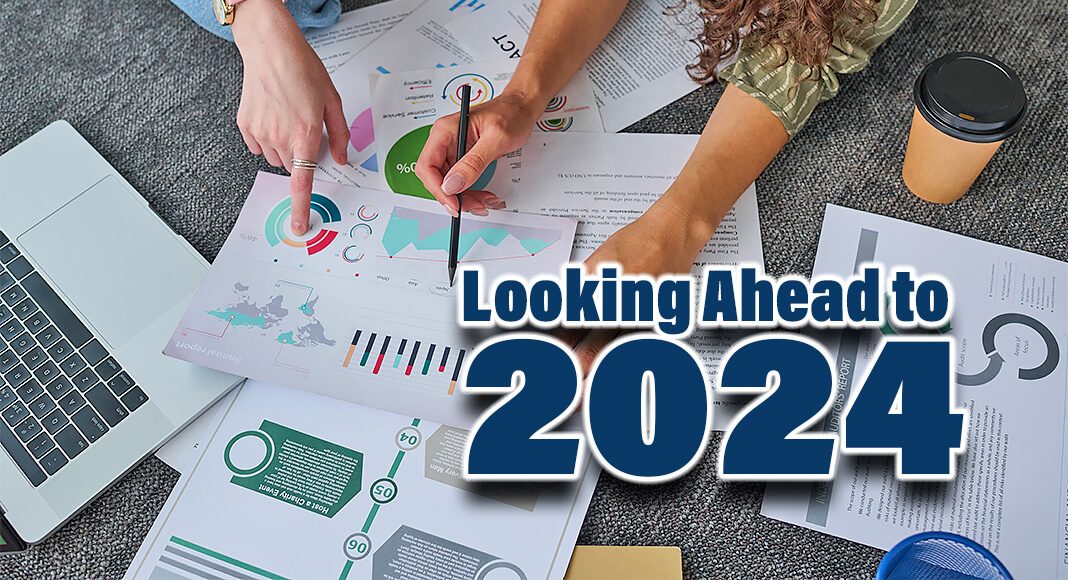
Texas Border Business
Written by:
Robert L. Santos,
Director, U.S. Census Bureau
As we navigate the first quarter of the new year, I have been reflecting upon our collective journey to excellence. It’s a journey that features effective partnerships, continuous communication and working together to understand needs, leverage our strength and maximize productivity within recognized constraints.
Like federal statistical agencies across the nation (and the world!), the U.S. Census Bureau is charged with producing quality statistics in the face of declining survey response rates, rising costs and increasing complexities of data collection. Once data are collected, we then must address the intricacies of disclosure risks while preserving data utility/granularity. Plus, there’s the challenge of providing statistical data that meets the myriad needs of increasingly diverse communities of users. Statistical data are only as good as their ability to provide the insight sought by federal agencies, tribal nations, policymakers, state and local governments, community organizations, businesses, scholars and other members of the public.
Yet I’ve always envisaged obstacles as fodder for opportunity. These challenges motivate our transformation into a 21st century federal statistical agency. They motivate our outreach to communities and stakeholders to provide public service represented by our statistical data. And they motivate the importance of true partnerships – travel partners, if you will – on our journey to excellence.
Today, I want to talk about how we’re responding to those challenges and the opportunities that lie ahead for the Census Bureau. You’ll see that we embrace and utilize our core values in our work. We recognize and value all stakeholders, actively seeking diverse perspectives. We leverage our role as a public servant. And when we put it all together, we can spark innovation, create new levels of excellence, accelerate our transformation and modernization, and deliver accurate, relevant statistical products to you – the public.
As the nation’s largest statistical agency, the Census Bureau this year will continue to be a leader in the federal statistical system. We’ll benefit from collaborations with our superb fellow statistical agencies as well as the support of the U.S. Chief Statistician. We will continue to be led by our values – scientific integrity, objectivity, transparency and independence. We will also continue to seek diverse perspectives to pursue excellence in all that we do.
We’ll work with our federal colleagues to assess their data needs and to cultivate coherence and relevance in measurement. After all, working together is what a government-of-the-whole approach is all about. Our work together includes tackling topics likes disability, climate and privacy for which multiple agencies have data or missions. Helping agencies with their data needs also benefits historically undercounted and underserved populations, such as rural America, people on tribal lands and communities of color throughout our nation. We’re also working to cultivate interagency agreements for equity.
Continuous innovation and modernization of how we produce statistics is essential to better meet the nation’s complex and diverse informational needs. There are many topics like climate extremes, broadband deployment, the gig economy, and economic development that require more than a single survey, census or data source to study and resolve.
As part of our transformation and modernization, we’re reimagining the way we produce statistical data. We’ve commenced a “Statistical Product First” approach that specifically focuses on expressed public needs. Under this new approach, we engage with the public to identify the data purposes and uses that people need. This drives the development of the statistical products. And this outreach is iterative to ensure continuous improvement and clear understandings.
We recently announced an early application of this approach, to create new experimental data products with the American Indian and Alaska Native Community in mind. Because this approach depends on in-depth, ongoing dialogue with our data users and the public, it is also a step toward increased data equity and access.
Our work on data equity and access is continuous and expansive. Notably, we’ll continue to seek out diverse voices to advance innovation, spur creativity and critical thinking – and ultimately create the highest quality statistics. Through our external engagements over the past few years, we’ve found that people with different lived experiences and cultures offer powerful insights. But they do so only if provided an opportunity to participate.
Community engagement is critical to understanding root causes of problems and developing culturally relevant solutions. This is a priority. As we have throughout my tenure as director, we’ll continue to hold conversations with community groups, public officials, tribes and stakeholders across America. For example, along with our colleagues from the Office of Management and Budget (OMB), the National Center for Health Statistics (NCHS) and other statistical agencies, we will continue our work with stakeholders and the public to better understand data needs and data uses surrounding the topic of disability.
As part of these efforts, we will continue to cultivate partnerships with institutions of higher learning like those we have with Bowie State University, the University of Texas at San Antonio and the University of Puerto Rico. These important partnerships are part of our effort to connect with communities and achieve a high-quality, motivated, diverse workforce. They also represent important conduits to community needs and data use cases.
A key area of work this year will be our preparations for the 2030 Census. As part of our commitment to open and transparent communication, we will be continuing our series of webinars to share information about our preparations. In January, we announced that our initial operational plan for the 2030 Census will be released in early 2025, and we’ll hold a major field test in 2026. Soon we will begin to release strategy documents outlining how we’re approaching fundamental aspects of our census preparations.
Through it all, we will continue to release quality data on our nation’s people, places and economy. This includes annual population estimates, American Community Survey 1-year and 5-year estimates, and data on income, poverty and health insurance coverage in the United States. We’ve already released the First Look at data from the 2022 Economic Census, and are set to release the Detailed Demographic and Housing Characteristics File B from the 2020 Census and many other new products later this year. We will also continue developing and improving our experimental products that uniquely combine data from multiple sources. These include our Community Resilience Estimates, Business Trends and Outlook Estimates, National Experimental Well Being Statistics and Veteran Employment Outcomes data, to name a few.
From our meetings with hundreds of Census Bureau data users across America – including stakeholder groups, businesses, and state, local and tribal government officials – we know how critical our statistical data are. We take great pride in providing quality data on our nation’s people, places and economy to communities.
These are just a few of the ways the Census Bureau will meet challenges with creativity and innovation this year. As always, our strategic plan and core values of scientific integrity, objectivity, transparency and independence will guide our actions, planning and decisions.
Thank you for being a critical travel partner on our journey! Stay tuned for a companion blog from Deputy Director Ron Jarmin outlining our specific milestones and objectives for 2024.















